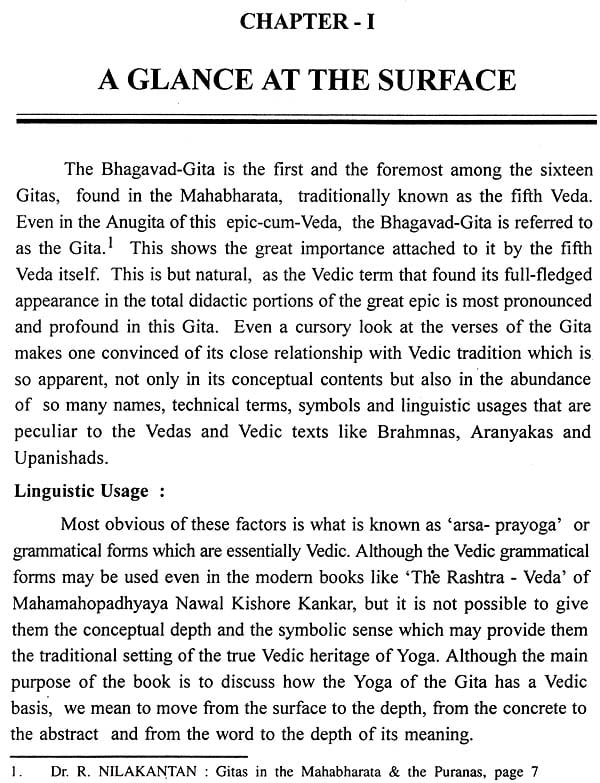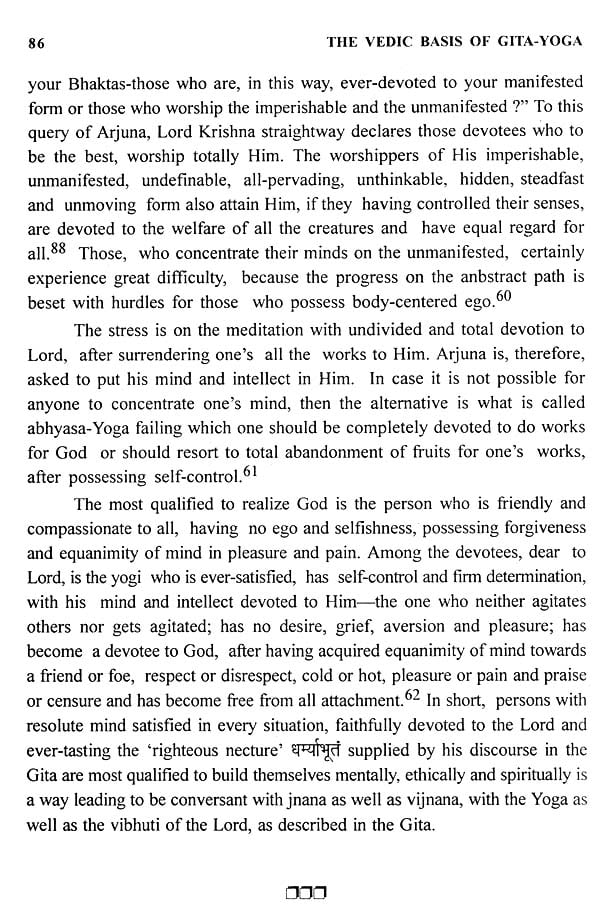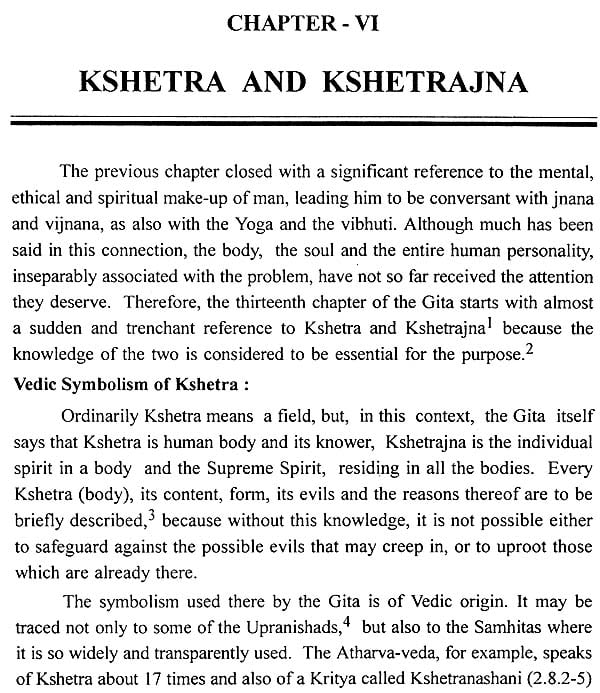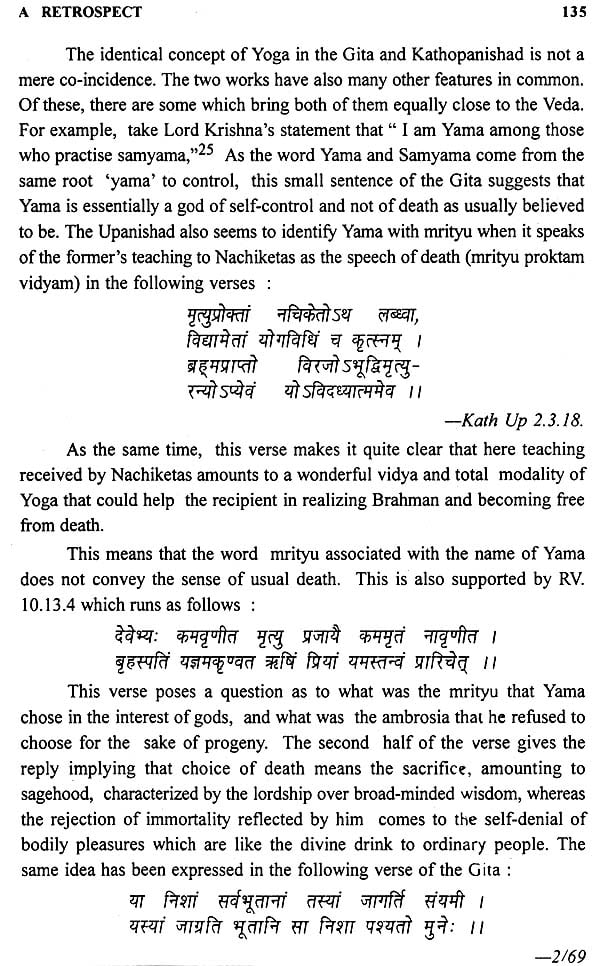
The Vedic Basis of Gita Yoga
Book Specification
| Item Code: | NAO950 |
| Author: | Dr. Renuka Rathore |
| Publisher: | Book Treasure. Jodhpur |
| Language: | English |
| Edition: | 2018 |
| ISBN: | 8190042254 |
| Pages: | 144 |
| Cover: | Hardcover |
| Other Details | 8.5 inch X 5.5 inch |
| Weight | 340 gm |
Book Description
It is a unique work on the Srimad Bhagvad Gita which has been so far translated in at least, seventy five languages in the world and has in all-over two thousand editions. In spite of its great popularity, scholars have expressed divergent opinion, on its textual or conceptual unity. Dr. Renuka Rathore attributes, this divergence, primarily to the fact that scholars tried to understand it in isolation, for getting that it is an inseparable part of the great epic Mahabharata, which is traditionally regarded as the fifth Veda. The author finds various names of Yoga, mentioned in the Gita, as the different aspects of what is termed there as Yoga-Yajna. She identifies this Yoga-Yajna with the Jishnu-Yoga which also, like Gita-Yoga aims at the best form of human behaviour, leading to the realization of not only the global unity of mankind, but also of the supreme universal energy, responsible for the unity of the entire cosmos. Thus, it presents the most comprehensive concept of Yoga, traceable to the Vedas which are indeed the oldest books in the library of mankind.
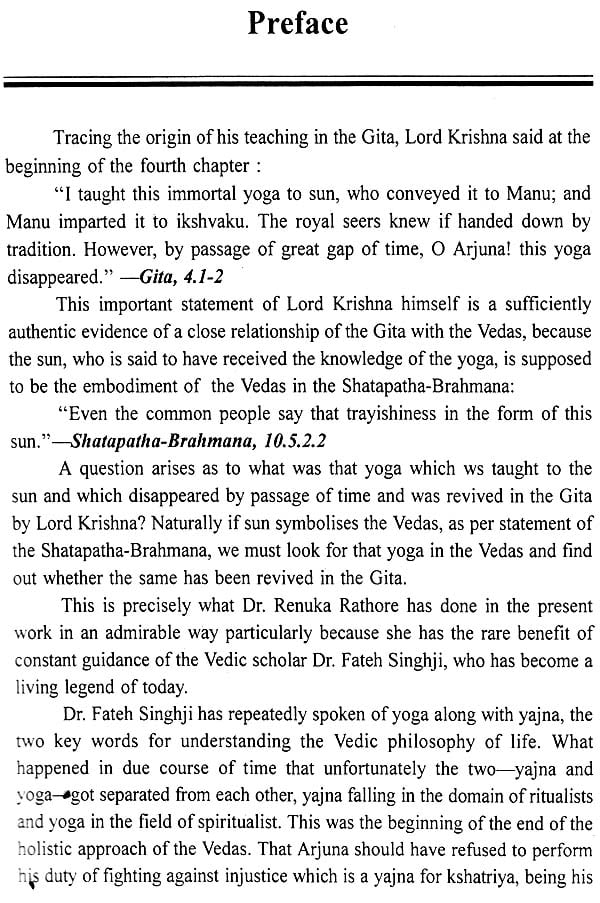
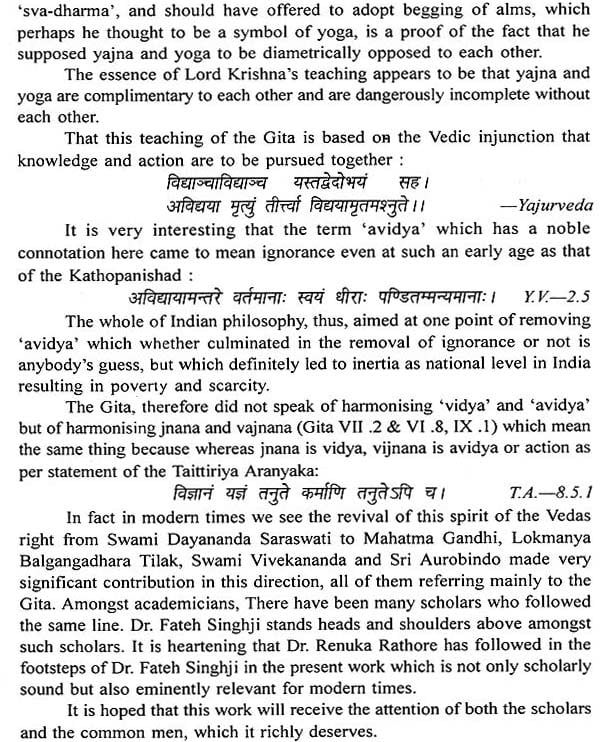
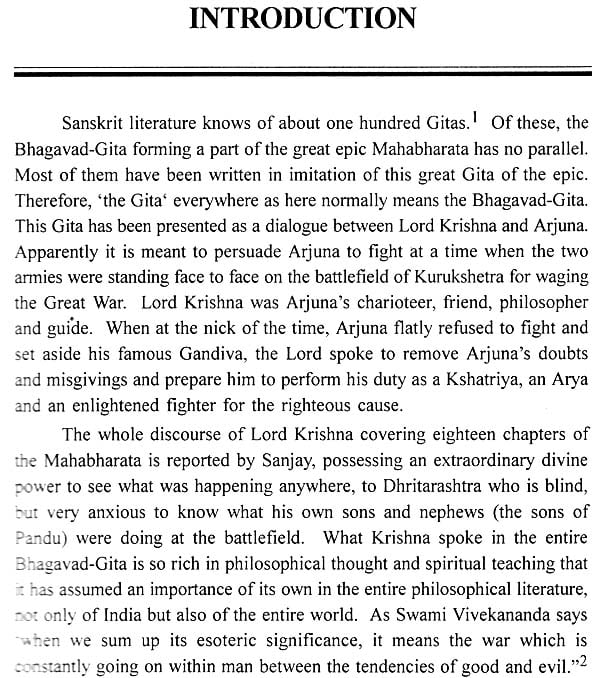
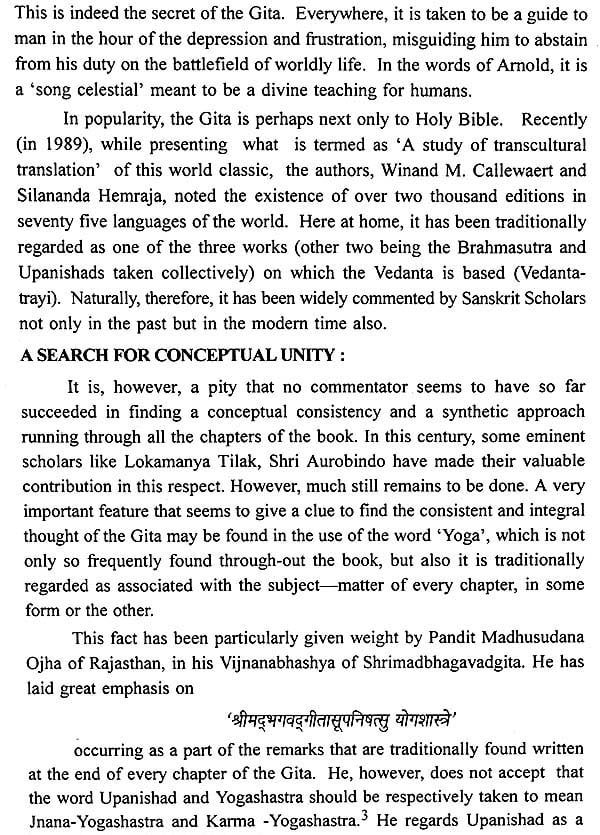
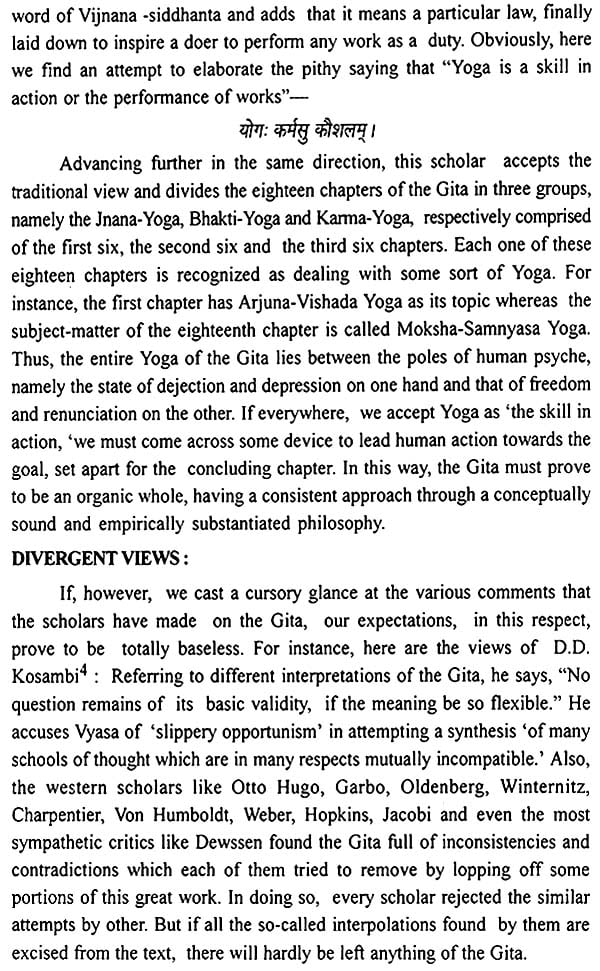
| Blessings | iii | |
| Acknowledgements | v | |
| Preface | vii | |
| Introduction | ix | |
| A search for conceptual unity | ||
| Divergent views | ||
| Growing popularity | ||
| Vedic heritage | ||
| Co-relation with Veda | ||
| The yoga of Gita and Veda | ||
| 1 | Chapter First | 21 |
| A Glance At The Surface | ||
| Linguistic Usages | ||
| The Vedic pantheon | ||
| Some Vedic names | ||
| The Vedic style | ||
| Deva and Asura | ||
| Yajna | ||
| Purushottama-yoga | ||
| The Veda-vada | ||
| The cause of confusion | ||
| 2 | Chapter Second | 33 |
| Towards The Depth Of The Gita | ||
| A dialogue on Vedic pattern | ||
| The clue to their common basis | ||
| The meaning of Vaishwanara-Agni | ||
| Yama as the teacher | ||
| The task of a disciple | ||
| 3 | Chapter Third : | 46 |
| Yoga, Yogeshwara And Yogi | ||
| The special feature | ||
| Svabhava and Svadharma | ||
| The natural work of man | ||
| The yoga of victory | ||
| The Vedic yoga of conquest | ||
| The concept of yogi in Gita | ||
| 4 | Chapter Fourth | 63 |
| Towards Avyaya-Yoga | ||
| A call for Aryan duty | ||
| The essence of avyaya-yoga | ||
| 5 | Chapter Fifth | 74 |
| The Jnana with Vijnana | ||
| The Veda in a new form | ||
| The qualified seer | ||
| 6 | Chapter Sixth | 87 |
| Kshetra And Kshetrajna | ||
| Vedic symbolism of Kshetra | ||
| Gita's philosophical background | ||
| The three gunas | ||
| Three gunas in the vedas | ||
| 7 | Chapter Seventh : | 98 |
| From Kshema to Yoga-Kshema | ||
| An unified field or Kshetrea | ||
| Sita and Kshetrapati | ||
| The stress of karma | ||
| The karma and jnana | ||
| Towards bhakti | ||
| The ultimate Gita yoga | ||
| The growth of yoga | ||
| Yoga-kshema | ||
| The Ratha-yoga | ||
| The Vastoshpati | ||
| From kshema to Yogakshema | ||
| Division of the gunas and karmas | ||
| The four varnas | ||
| 8 | Chapter Eighth : | 122 |
| A Retrospect | ||
| The obvious reference to Veda | ||
| Vedantakrit | ||
| Yoga and vibhuti | ||
| The path of yoga | ||
| The core of the Gita and the Veda | ||
| The Gita and the Katha-upanishad | ||
| Nachiketas, a Symbol | ||
| Bibliography | 139 | |
| Writers | 143 |
